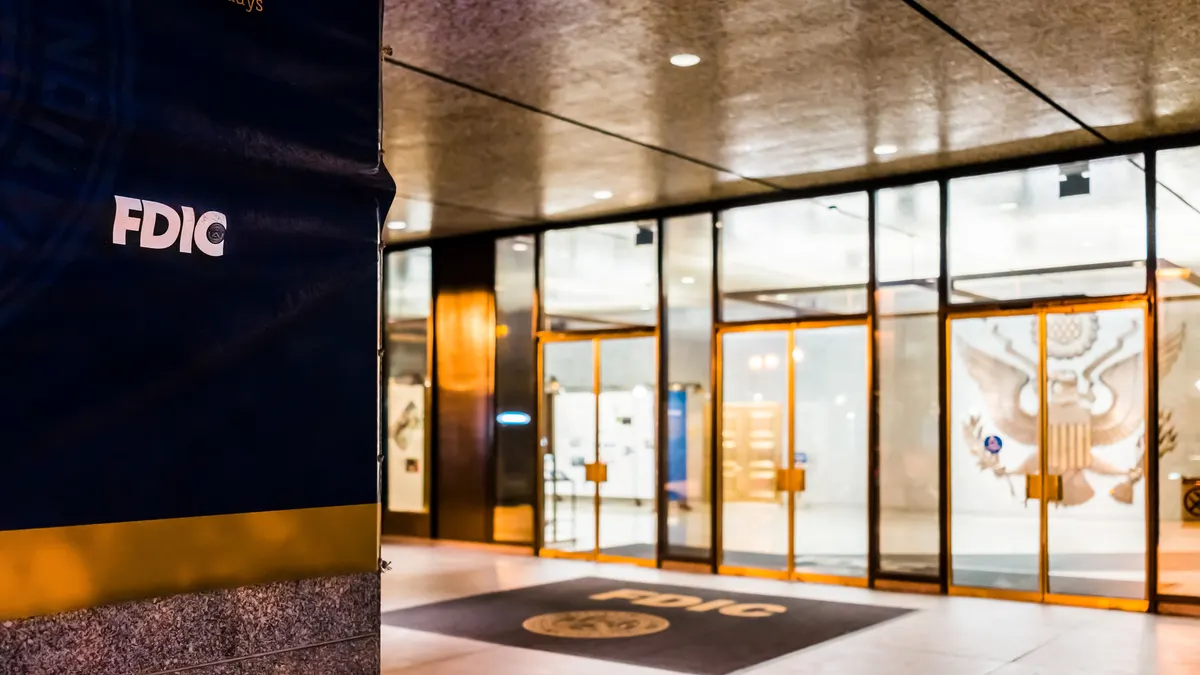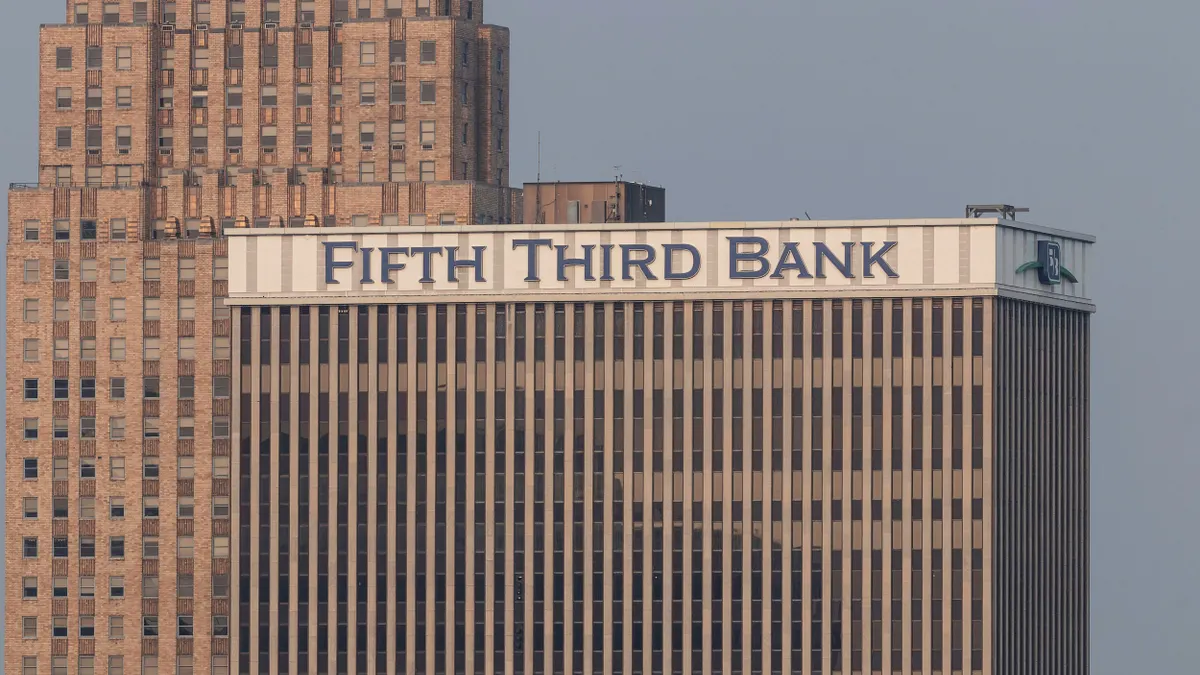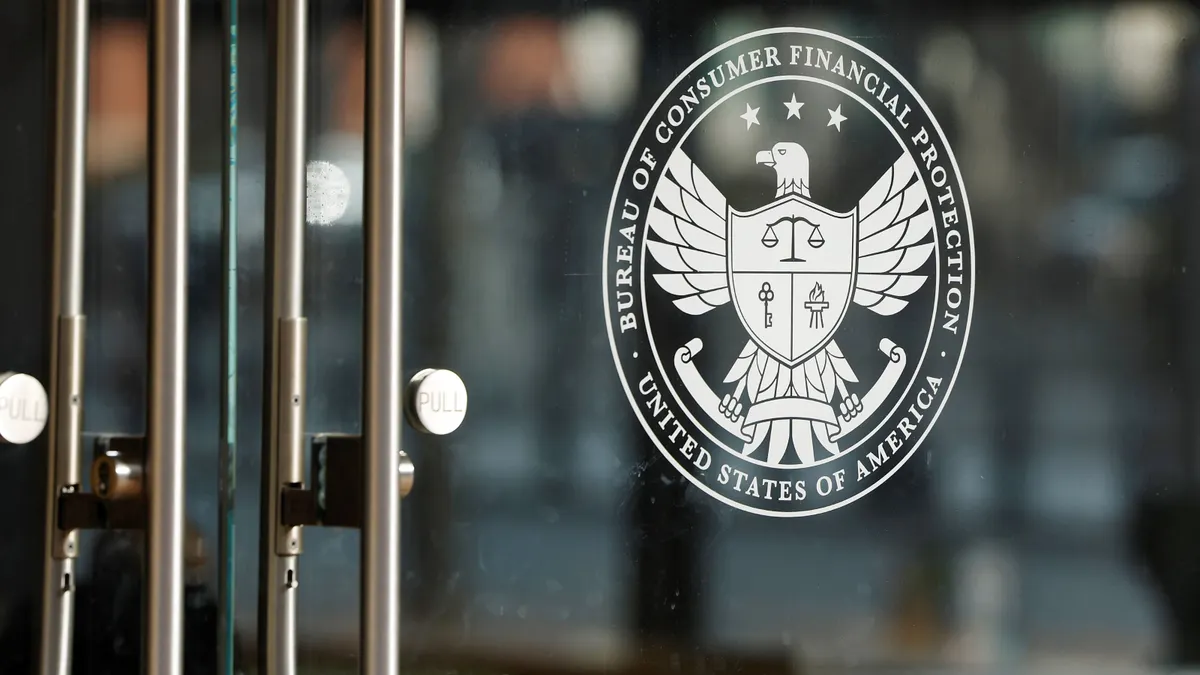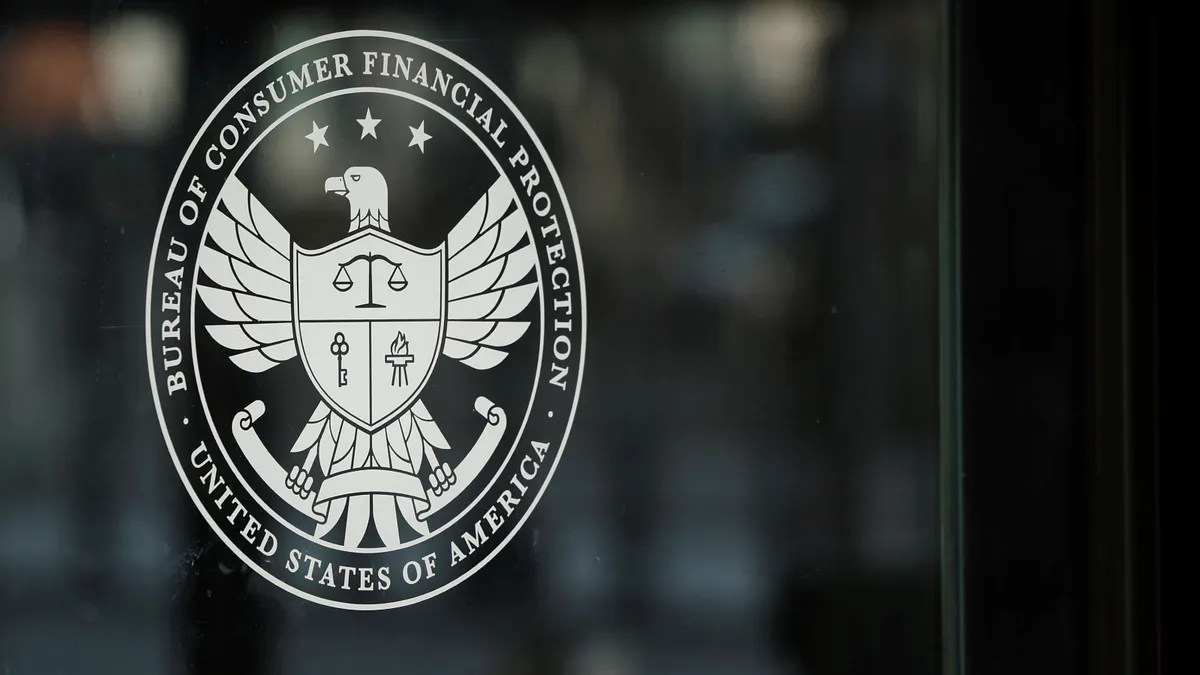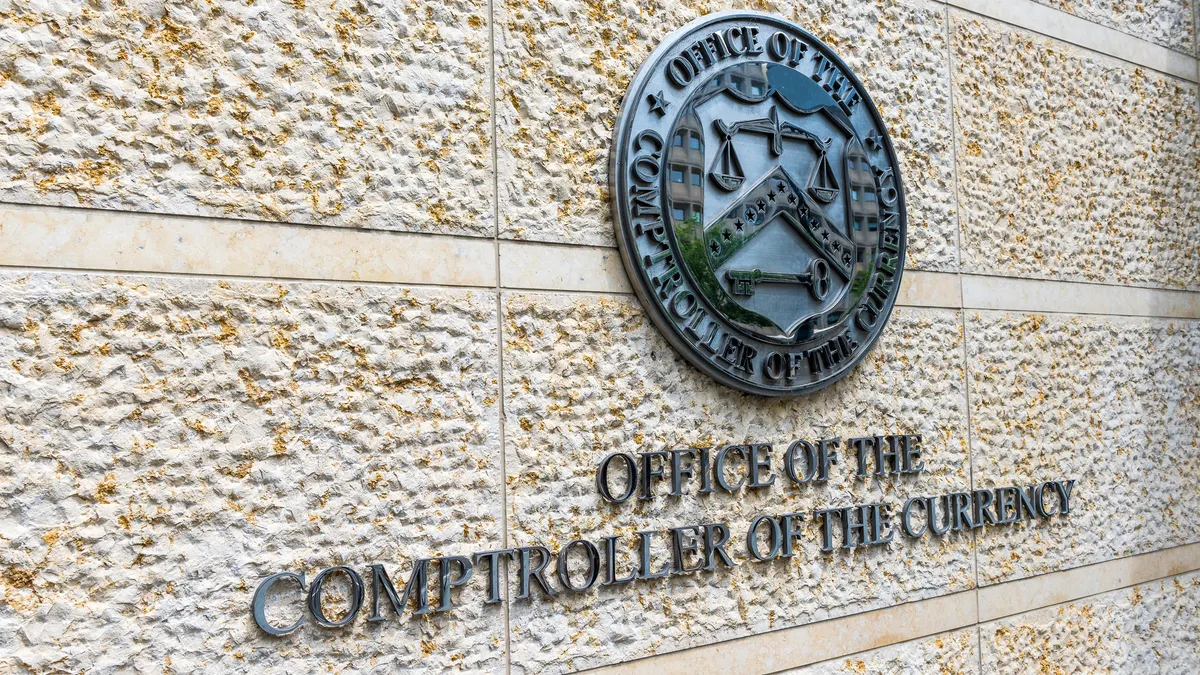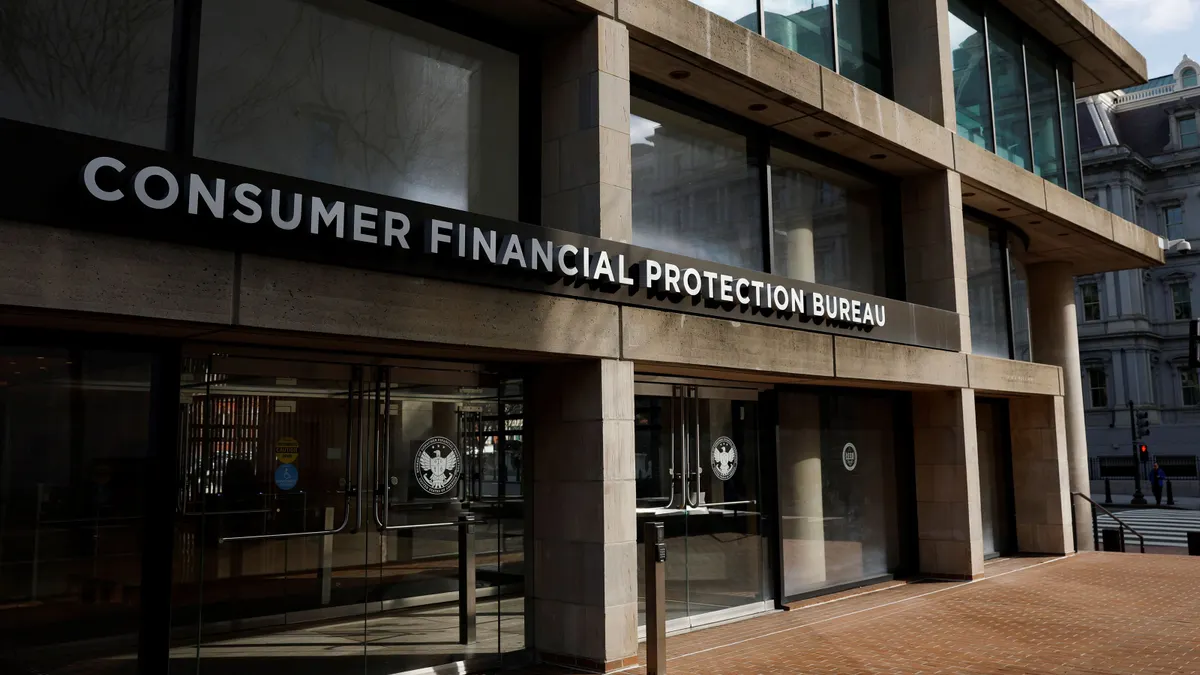In a meeting of its board Tuesday, the Federal Deposit Insurance Corp. made clear it was set on rolling back certain Biden-era regulations.
A resolution approved Tuesday would withdraw a proposal from last August that would have required industrial loan company charter applicants to prove their independence from their parent firms and let the FDIC evaluate whether an ILC would meet its community’s lending needs.
The FDIC’s now-acting chair, Travis Hill, dissented with the proposal last year, calling it an “odd place to start” with regard to ILCs – a divisive setup that opponents argue would allow large corporations to provide banking services without oversight from the Federal Reserve. The FDIC did not approve any ILC charter applications for more than a decade before giving green lights to fintech Square (now Block) and student loan servicer Nelnet in 2020. And ILCs’ approval prospects have been rocky since.
Hill, however, has sought to embrace ways to encourage new bank formation, including ILCs. Since Hill became the FDIC’s acting chair in January, carmaker Nissan has applied for an ILC charter and two previous applicants – GM and investment firm Edward Jones – have resubmitted their paperwork.
For its part, the FDIC issued a request for information that gives interested parties 60 days to comment publicly on changes the agency could make to its ILC charter application evaluation process.
“Although many of the arguments related to ILCs are familiar, sustained interest in the charter by a diverse set of institutions suggests that a wide-ranging RFI would be a helpful step,” Hill said in a statement. “As I have said previously, I believe our ultimate objective should be a policy statement or similar issuance that provides clarity on how the FDIC interprets the applicable statutory factors in the context of ILC filings.”
ILCs are hardly the only space in which the FDIC moved Tuesday to reverse Biden-era policy. The agency also proposed rescinding a 2023 revision of the Community Reinvestment Act. The 2023 version takes into account banks’ online presence, requiring banks to lend in lower-income communities where they have a concentration of mortgage and small-business loans, rather than just where their branches are.
The rule also reclassifies banks by size, defining small banks as those with less than $600 million in assets, and subjecting banks with between $600 million and $2 billion in assets to a retail lending test.
The 2023 rule, floated under Democratic leadership, came after the Republican-led Office of the Comptroller of the Currency proposed a CRA rewrite in 2020. That was later rescinded.
Tuesday’s proposal, teased in March, would revert the CRA to its 1995 standard.
The FDIC on Tuesday also proposed a tweak in the way it handles the appeal of supervision recommendations and orders. The agency would create an independent Office of Supervisory Appeals, meant to increase transparency and consistency in the appeals process, and de-politicize it.
This, too, marks a return to a Republican-led effort at the agency. The FDIC in 2020 proposed creating an independent, stand-alone office focused on reviewing and deciding supervisory appeals, Hill said. Though the office launched in 2021, it was disbanded before hearing any appeals, amid a change in leadership at the agency, he added.
“The rationale for instituting the new office four years ago remains the same today,” Hill said in a statement.
The FDIC aims to recruit external, impartial candidates “who are less likely to have established relationships with individuals involved in the supervisory process,” Hill said. Officials would also serve time-limited terms, so longer-term career goals wouldn’t cloud judgment, he said. Also, limiting the office’s scope to the resolution of appeals means officials will give “each case the proper level of attention and diligence,” Hill said.
Not every proposal Tuesday was meant to return the agency to its pre-Biden form.
The FDIC proposed a rule to update certain regulatory thresholds to reflect inflation. The move would protect smaller banks from shouldering too heavy a burden if inflation – rather than a change in an institution’s size, risk profile or complexity – were to push a bank over a threshold.
Under the proposal, thresholds would be updated every two years based on changes to the Consumer Price Index – or more frequently if inflation increases by more than 8% in a year. Thresholds will not decrease, however, in times when prices fall.
The proposal, which is open to public comment for 60 days, drew measured support from at least one trade group. The American Bankers Association called it a “long-overdue step toward a more rational and modern bank regulatory framework.”
“For many years, ABA has argued that arbitrary asset thresholds impose unintended constraints and costs on banks while making it harder for regulators to focus on the largest sources of risk — effects that are compounded when thresholds remain static over years and even decades,” the group said. “Just as important as indexing itself is ensuring that the chosen measure reflects structural changes in the banking sector and overall economic growth. We look forward to reviewing the proposal’s use of CPI and intend to explore alternatives such as nominal [gross domestic product] or total bank assets.”
The FDIC would apply the proposal to bank filing procedures, securities of nonmember banks and state savings associations, restrictions on asset sales from failed institutions, international banking, annual audits and reporting and orderly liquidation authority regulations.


